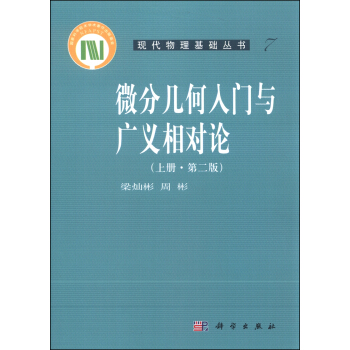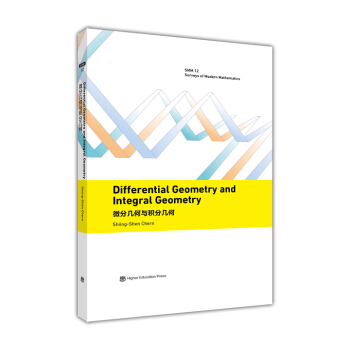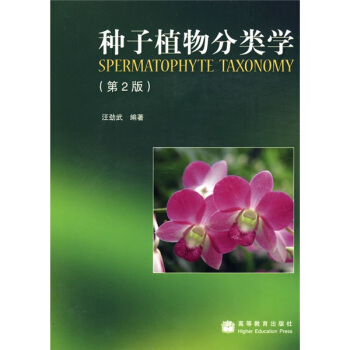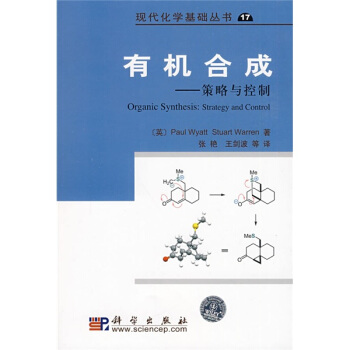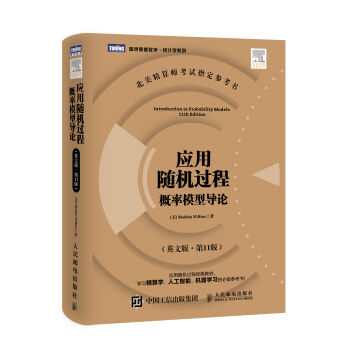
應用隨機過程 概率模型導論(英文版 第11版) epub pdf mobi txt 電子書 下載 2025
應用隨機過程 概率模型導論(英文版 第11版) epub pdf mobi txt 電子書 下載 2025
簡體網頁||繁體網頁
下載連結1
下載連結2
下載連結3
發表於2025-06-03
商品介绍
應用隨機過程 概率模型導論(英文版 第11版) epub pdf mobi txt 電子書 下載 2025
相关書籍
書籍描述
編輯推薦
《應用隨機過程 概率模型導論》是國際知名統計學傢Sheldon M. Ross所著的關於基礎概率理論和隨機過程的經典教材,被加州大學伯剋利分校、哥倫比亞大學、普度大學、密歇根大學、俄勒岡州立大學、華盛頓大學等眾多國外知名大學所采用。與其他隨機過程教材相比,本書非常強調實踐性,內含極其豐富的例子和習題,涵蓋瞭眾多學科的各種應用。作者富於啓發而又不失嚴密性的敘述方式,有助於使讀者建立概率思維方式,培養對概率理論、隨機過程的直觀感覺。對那些需要將概率理論應用於精算學、計算機科學、管理學和社會科學的讀者而言,本書是一本極好的教材或參考書。
第11版新增大量例子和習題,還對連續時間的馬爾可夫鏈、漂移布朗運動等內容做瞭修訂,更加注重強化讀者的概率直觀。
內容簡介
《應用隨機過程 概率模型導論(英文版 第11版)》是一部經典的隨機過程著作,敘述深入淺齣、涉及麵廣。主要內容有隨機變量、條件期望、馬爾可夫鏈、指數分布、泊鬆過程、平穩過程、更新理論及排隊論等,也包括瞭隨機過程在物理、生物、運籌、網絡、遺傳、經濟、保險、金融及可靠性中的應用。特彆是有關隨機模擬的內容,給隨機係統運行的模擬計算提供瞭有力的工具。最新版還增加瞭不帶左跳的隨機徘徊和生滅排隊模型等內容。本書約有700道習題,其中帶星號的習題還提供瞭解答。
《應用隨機過程 概率模型導論(英文版 第11版)》可作為概率論與數理統計、計算機科學、保險學、物理學、社會科學、生命科學、管理科學與工程學等專業隨機過程基礎課教材。
作者簡介
Sheldon M. Ross,國際知名概率與統計學傢,南加州大學工業工程與運籌係係主任。1968年博士畢業於斯坦福大學統計係,曾在加州大學伯剋利分校任教多年。研究領域包括:隨機模型、仿真模擬、統計分析、金融數學等。Ross教授著述頗豐,他的多種暢銷數學和統計教材均産生瞭世界性的影響,如《概率論基礎教程(第8版)》等。
內頁插圖
精彩書評
★本書的一大特色是實例豐富,內容涉及多個學科,尤其是精算學……相信任何有上進心的讀者都會對此愛不釋手。”——JeanLeMaire,賓夕法尼亞大學沃頓商學院
★“書中的例子和習題非常齣色,作者不僅提供瞭非常基本的例子,以闡述基礎概念和公式,還從盡可能多的學科中提煉齣許多較高級的實例,極具參考價值。”
——MattCarlton,加州州立理工大學(CalPoly)
目錄
1IntroductiontoProbabilityTheory1.1Introduction
1.2SampleSpaceandEvents
1.3ProbabilitiesDefinedonEvents
1.4ConditionalProbabilities
1.5IndependentEvents
1.6Bayes'Formula
Exercises
References
2RandomVariables
2.1RandomVariables
2.2DiscreteRandomVariables
2.2.1TheBernoulliRandomVariable
2.2.2TheBinomialRandomVariable
2.2.3TheGeometricRandomVariable
2.2.4ThePoissonRandomVariable
2.3ContinuousRandomVariables
2.3.1TheUniformRandomVariable
2.3.2ExponentialRandomVariables
2.3.3GammaRandomVariables
2.3.4NormalRandomVariables
2.4ExpectationofaRandomVariable
2.4.1TheDiscreteCase
2.4.2TheContinuousCase
2.4.3ExpectationofaFunctionofaRandomVariable
2.5JointlyDistributedRandomVariables
2.5.1JointDistributionFunctions
2.5.2IndependentRandomVariables
2.5.3CovarianceandVarianceofSumsofRandomVariables
2.5.4JointProbabilityDistributionofFunctionsofRandomVariables
2.6MomentGeneratingFunctions
2.6.1TheJointDistributionoftheSampleMeanandSampleVariancefromaNormalPopulation
2.7TheDistributionoftheNumberofEventsthatOccur
2.8LimitTheorems
2.9StochasticProcesses
Exercises
References
3ConditionalProbabilityandConditionalExpectation
3.1Introduction
3.2TheDiscreteCase
3.3TheContinuousCase
3.4ComputingExpectationsbyConditioning
3.4.1ComputingVariancesbyConditioning
3.5ComputingProbabilitiesbyConditioning
3.6SomeApplications
3.6.1AListModel
3.6.2ARandomGraph
3.6.3UniformPriors,Polya'sUrnModel,andBose-EinsteinStatistics
3.6.4MeanTimeforPatterns
3.6.5Thek-RecordValuesofDiscreteRandomVariables
3.6.6LeftSkipFreeRandomWalks
3.7AnIdentityforCompoundRandomVariables
3.7.1PoissonCompoundingDistribution
3.7.2BinomialCompoundingDistribution
3.7.3ACompoundingDistributionRelatedtotheNegativeBinomial
Exercises
4MarkovChains
4.1Introduction
4.2Chapman-KolmogorovEquations
4.3ClassificationofStates
4.4Long-RunProportionsandLimitingProbabilities
4.4.1LimitingProbabilities
4.5SomeApplications
4.5.1TheGambler'sRuinProblem
4.5.2AModelforAlgorithmicEfficiency
4.5.3UsingaRandomWalktoAnalyzeaProbabilisticAlgorithmfortheSatisfiabilityProblem
4.6MeanTimeSpentinTransientStates
4.7BranchingProcesses
4.8TimeReversibleMarkovChains
4.9MarkovChainMonteCarloMethods
4.10MarkovDecisionProcesses
4.11HiddenMarkovChains
4.11.1PredictingtheStates
Exercises
References
5TheExponentialDistributionandthePoissonProcess
5.1Introduction
5.2TheExponentialDistribution
5.2.1Definition
5.2.2PropertiesoftheExponentialDistribution
5.2.3FurtherPropertiesoftheExponentialDistribution
5.2.4ConvolutionsofExponentialRandomVariables
5.3ThePoissonProcess
5.3.1CountingProcesses
5.3.2DefinitionofthePoissonProcess
5.3.3InterarrivalandWaitingTimeDistributions
5.3.4FurtherPropertiesofPoissonProcesses
5.3.5ConditionalDistributionoftheArrivalTimes
5.3.6EstimatingSoftwareReliability
5.4GeneralizationsofthePoissonProcess
5.4.1NonhomogeneousPoissonProcess
5.4.2CompoundPoissonProcess
5.4.3ConditionalorMixedPoissonProcesses
5.5RandomIntensityFunctionsandHawkesProcesses
Exercises
References
6Continuous-TimeMarkovChains
6.1Introduction
6.2Continuous-TimeMarkovChains
6.3BirthandDeathProcesses
6.4TheTransitionProbabilityFunctionPij(t)
6.5LimitingProbabilities
6.6TimeReversibility
6.7TheReversedChain
6.8Uniformization
6.9ComputingtheTransitionProbabilities
Exercises
References
7RenewalTheoryandItsApplications
7.1Introduction
7.2DistributionofN(t)
7.3LimitTheoremsandTheirApplications
7.4RenewalRewardProcesses
7.5RegenerativeProcesses
7.5.1AlternatingRenewalProcesses
7.6Semi-MarkovProcesses
7.7TheInspectionParadox
7.8ComputingtheRenewalFunction
7.9ApplicationstoPatterns
7.9.1PatternsofDiscreteRandomVariables
7.9.2TheExpectedTimetoaMaximalRunofDistinctValues
7.9.3IncreasingRunsofContinuousRandomVariables
7.10TheInsuranceRuinProblem
Exercises
References
8QueueingTheory
8.1Introduction
8.2Preliminaries
8.2.1CostEquations
8.2.2Steady-StateProbabilities
8.3ExponentialModels
8.3.1ASingle-ServerExponentialQueueingSystem
8.3.2ASingle-ServerExponentialQueueingSystemHavingFiniteCapacity
8.3.3BirthandDeathQueueingModels
8.3.4AShoeShineShop
8.3.5AQueueingSystemwithBulkService
8.4NetworkofQueues
8.4.1OpenSystems
8.4.2ClosedSystems
8.5TheSystemM/G/
8.5.1Preliminaries:WorkandAnotherCostIdentity
8.5.2ApplicationofWorktoM/G/
8.5.3BusyPeriods
8.6VariationsontheM/G/
8.6.1TheM/G/1withRandom-SizedBatchArrivals
8.6.2PriorityQueues
8.6.3AnM/G/1OptimizationExample
8.6.4TheM/G/1QueuewithServerBreakdown
8.7TheModelG/M/
8.7.1TheG/M/1BusyandIdlePeriods
8.8AFiniteSourceModel
8.9MultiserverQueues
8.9.1Erlang'sLossSystem
8.9.2TheM/M/kQueue
8.9.3TheG/M/kQueue
8.9.4TheM/G/kQueue
Exercises
References
9ReliabilityTheory
9.1Introduction
9.2StructureFunctions
9.2.MinimalPathandMinimalCutSets
9.3ReliabilityofSystemsofIndependentComponents
9.4BoundsontheReliabilityFunction
9.4.1MethodofInclusionandExclusion
9.4.2SecondMethodforObtainingBoundsonr(p)
9.5SystemLifeasaFunctionofComponentLives
9.6ExpectedSystemLifetime
9.6.1AnUpperBoundontheExpectedLifeofaParallelSystem
9.7SystemswithRepair
9.7.1ASeriesModelwithSuspendedAnimation
Exercises
References
10BrownianMotionandStationaryProcesses
10.1BrownianMotion
10.2HittingTimes,MaximumVariable,andtheGambler'sRuinProblem
10.3VariationsonBrownianMotion
10.3.1BrownianMotionwithDrift
10.3.2GeometricBrownianMotion
10.4PricingStockOptions
10.4.1AnExampleinOptionsPricing
10.4.2TheArbitrageTheorem
10.4.3TheBlack-ScholesOptionPricingFormula
10.5TheMaximumofBrownianMotionwithDrift
10.6WhiteNoise
10.7GaussianProcesses
10.8StationaryandWeaklyStationaryProcesses
10.9HarmonicAnalysisofWeaklyStationaryProcesses
Exercises
References
11Simulation
11.1Introduction
11.2GeneralTechniquesforSimulatingContinuousRandomVariables
11.2.1TheInverseTransformationMethod
11.2.2TheRejectionMethod
11.2.TheHazardRateMethod
11.3SpecialTechniquesforSimulatingContinuousRandomVariables
11.3.1TheNormalDistribution
11.3.2TheGammaDistribution
11.3.3TheChi-SquaredDistribution
11.3.4TheBeta(n,m)Distribution
11.3.5TheExponentialDistribution-TheVonNeumannAlgorithm
11.4SimulatingfromDiscreteDistributions
11.4.1TheAliasMethod
11.5StochasticProcesses
11.5.1SimulatingaNonhomogeneousPoissonProcess
11.5.2SimulatingaTwo-DimensionalPoissonProcess
11.6VarianceReductionTechniques
11.6.1UseofAntitheticVariables
11.6.2VarianceReductionbyConditioning
11.6.3ControlVariates
11.6.4ImportanceSampling
11.7DeterminingtheNumberofRuns
11.8GeneratingfromtheStationaryDistributionofaMarkovChain
11.8.1CouplingfromthePast
11.8.2AnotherApproach
Exercises
References
Appendix:SolutionstoStarredExercises
Index
前言/序言
應用隨機過程 概率模型導論(英文版 第11版) epub pdf mobi txt 電子書 下載 2025
應用隨機過程 概率模型導論(英文版 第11版) 下載 epub mobi pdf txt 電子書應用隨機過程 概率模型導論(英文版 第11版) pdf 下載 mobi 下載 pub 下載 txt 電子書 下載 2025
應用隨機過程 概率模型導論(英文版 第11版) mobi pdf epub txt 電子書 下載 2025
應用隨機過程 概率模型導論(英文版 第11版) epub pdf mobi txt 電子書 下載讀者評價
我的書到手的時候包裝袋破瞭,還好發票還在。角磕瞭一下。彆的都是正常的,我跟第十版的電子版也對比瞭。內容應該也沒啥變化。就是看書碰到不會的還是用電子版加有道比較方便。
評分快遞小哥服務周到、熱情,顯示京東服務的高質量、高水平,大贊!
評分“可是伊莎貝拉姑姑比爸爸還年輕哩,”她說,抬頭凝視著,膽怯地盼望能得到更進一步的安慰。
評分“是的,”我說,“就跟你一樣的又瘦又乾。你的臉上都沒血色瞭。讓我們拉著手跑吧。你這樣無精打采,我敢說我要趕得上你瞭。”
評分“沒有人能說你會不會死在我們前頭,”我迴答。“預測不祥是不對的。我們要希望在我們任何人死去之前還有好多好多年要過:主人還年輕,我也還強壯,還不到四十五歲。我母親活到八十,直到最後還是個活潑的女人。假定林惇先生能活到六十,小姐,那比你活過的年紀還多得多呢。把一個災難提前二十年來哀悼不是很愚蠢的嗎?”
評分買完就降價,太可惡瞭
評分很專業的教材,贊一個!
評分書還不錯,由於時間的關係,還沒有認真的閱讀呢
評分書很不錯
應用隨機過程 概率模型導論(英文版 第11版) epub pdf mobi txt 電子書 下載 2025
應用隨機過程 概率模型導論(英文版 第11版) epub pdf mobi txt 電子書 下載 2025
分享鏈接
相关書籍
-
![黎曼麯麵和熱帶麯綫的模空間導引(英文版) [Introduction to Moduli Spaces of Riemann Surfaces and Tropical Curves] pdf epub mobi 電子書 下載](/static/pix.jpg) 黎曼麯麵和熱帶麯綫的模空間導引(英文版) [Introduction to Moduli Spaces of Riemann Surfaces and Tropical Curves] epub pdf mobi txt 電子書 下載
黎曼麯麵和熱帶麯綫的模空間導引(英文版) [Introduction to Moduli Spaces of Riemann Surfaces and Tropical Curves] epub pdf mobi txt 電子書 下載 -
 自然科學中確定性問題的應用數學 epub pdf mobi txt 電子書 下載
自然科學中確定性問題的應用數學 epub pdf mobi txt 電子書 下載 -
 劍橋科學史(第4捲):18世紀科學 epub pdf mobi txt 電子書 下載
劍橋科學史(第4捲):18世紀科學 epub pdf mobi txt 電子書 下載 -
 工科研究生教材,數學係列:應用數值分析 epub pdf mobi txt 電子書 下載
工科研究生教材,數學係列:應用數值分析 epub pdf mobi txt 電子書 下載 -
 全國高職高專係列規劃教材:高等數學 epub pdf mobi txt 電子書 下載
全國高職高專係列規劃教材:高等數學 epub pdf mobi txt 電子書 下載 -
 李理論與錶示論(英文版) epub pdf mobi txt 電子書 下載
李理論與錶示論(英文版) epub pdf mobi txt 電子書 下載 -
 完全交上的孤立奇點(第2版)(英文版) epub pdf mobi txt 電子書 下載
完全交上的孤立奇點(第2版)(英文版) epub pdf mobi txt 電子書 下載 -
 李-巴剋蘭-達布變換 epub pdf mobi txt 電子書 下載
李-巴剋蘭-達布變換 epub pdf mobi txt 電子書 下載 -
![有限群導引 (英文版) [Finite Groups: An Introduction] pdf epub mobi 電子書 下載](/static/pix.jpg) 有限群導引 (英文版) [Finite Groups: An Introduction] epub pdf mobi txt 電子書 下載
有限群導引 (英文版) [Finite Groups: An Introduction] epub pdf mobi txt 電子書 下載 -
![脆性固體斷裂力學(第2版) [Fracture of brittle solids] pdf epub mobi 電子書 下載](/static/pix.jpg) 脆性固體斷裂力學(第2版) [Fracture of brittle solids] epub pdf mobi txt 電子書 下載
脆性固體斷裂力學(第2版) [Fracture of brittle solids] epub pdf mobi txt 電子書 下載 -
 應用理論力學習題詳解 epub pdf mobi txt 電子書 下載
應用理論力學習題詳解 epub pdf mobi txt 電子書 下載 -
 P曆節氣 epub pdf mobi txt 電子書 下載
P曆節氣 epub pdf mobi txt 電子書 下載 -
 現代物理基礎叢書:微分幾何入門與廣義相對論(第二版 套裝上中下冊) epub pdf mobi txt 電子書 下載
現代物理基礎叢書:微分幾何入門與廣義相對論(第二版 套裝上中下冊) epub pdf mobi txt 電子書 下載 -
![國外化學經典教材係列(影印版):質譜(第2版) [Mass Spectrometry (2nd Edition)] pdf epub mobi 電子書 下載](/static/pix.jpg) 國外化學經典教材係列(影印版):質譜(第2版) [Mass Spectrometry (2nd Edition)] epub pdf mobi txt 電子書 下載
國外化學經典教材係列(影印版):質譜(第2版) [Mass Spectrometry (2nd Edition)] epub pdf mobi txt 電子書 下載 -
 微分幾何入門與廣義相對論(上冊 第二版) epub pdf mobi txt 電子書 下載
微分幾何入門與廣義相對論(上冊 第二版) epub pdf mobi txt 電子書 下載 -
 龐加萊猜想 追尋宇宙的形狀 epub pdf mobi txt 電子書 下載
龐加萊猜想 追尋宇宙的形狀 epub pdf mobi txt 電子書 下載 -
 中國常見植物野外識彆手冊:祁連山冊 epub pdf mobi txt 電子書 下載
中國常見植物野外識彆手冊:祁連山冊 epub pdf mobi txt 電子書 下載 -
 微分幾何與積分幾何(英文版) epub pdf mobi txt 電子書 下載
微分幾何與積分幾何(英文版) epub pdf mobi txt 電子書 下載 -
 種子植物分類學(第2版) epub pdf mobi txt 電子書 下載
種子植物分類學(第2版) epub pdf mobi txt 電子書 下載 -
 有機閤成:策略與控製 epub pdf mobi txt 電子書 下載
有機閤成:策略與控製 epub pdf mobi txt 電子書 下載



![黎曼麯麵和熱帶麯綫的模空間導引(英文版) [Introduction to Moduli Spaces of Riemann Surfaces and Tropical Curves] pdf epub mobi 電子書 下載](https://pic.tinynews.org/12065623/5948d943N626d02fe.jpg)

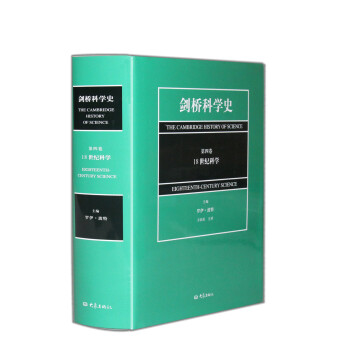
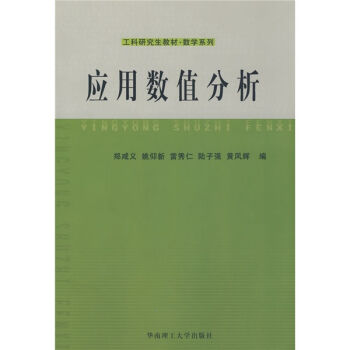
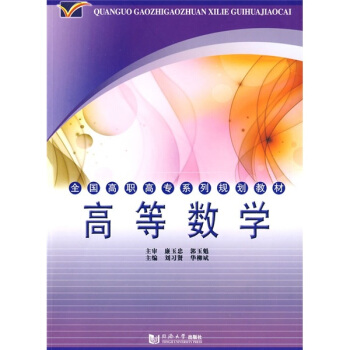
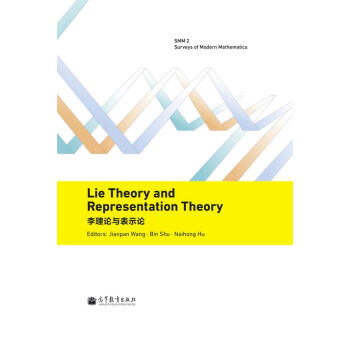
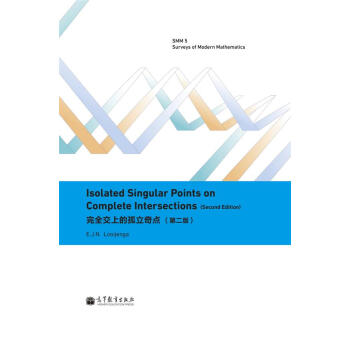

![有限群導引 (英文版) [Finite Groups: An Introduction] pdf epub mobi 電子書 下載](https://pic.tinynews.org/11901629/57230039N78cb63ae.jpg)
![脆性固體斷裂力學(第2版) [Fracture of brittle solids] pdf epub mobi 電子書 下載](https://pic.tinynews.org/10126143/565524e8N4c9ade30.jpg)


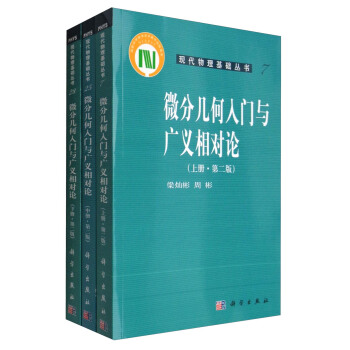
![國外化學經典教材係列(影印版):質譜(第2版) [Mass Spectrometry (2nd Edition)] pdf epub mobi 電子書 下載](https://pic.tinynews.org/10921191/5398fcc9N32449a0e.jpg)
